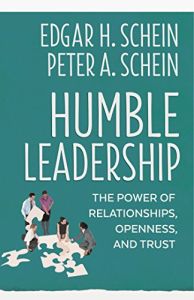Join getAbstract to access the summary!

Join getAbstract to access the summary!
Edgar H. Schein and Peter A. Schein
Humble Leadership
The Power of Relationships, Openness, and Trust
Berrett-Koehler, 2018
What's inside?
As command-and-control leadership wanes, success now and in the future calls for “humble leadership.”
Recommendation
In a world characterized by volatility, uncertainty, complexity and ambiguity, versatile leadership makes more sense than the shopworn model of lofty corporate “heroes and disruptors” who are supposedly invincible. Edgar H. Schein, a management scholar, and his son Peter A. Schein, an expert on organizations, explain how to achieve cultural change through “humble leadership.” The theme picks up on their previous books, Humble Consulting and Humble Inquiry. Their guidance will be especially useful to coaches, mentors and HR officials who work on leadership development.
Summary
About the Authors
Edgar H. Schein, PhD, is professor emeritus at the Massachusetts Institute of Technology’s Sloan School of Management. His son Peter A. Schein co-founded and is chief operating officer of the Organizational Culture and Leadership Institute.




















Comment on this summary